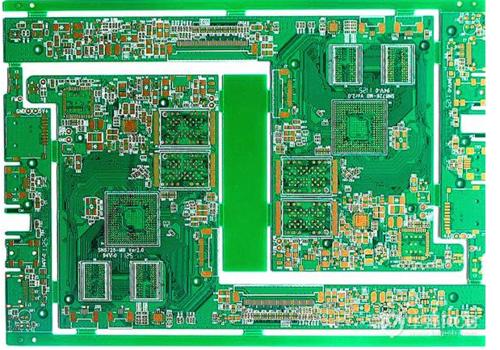 +86 755 2794 4155
+86 755 2794 4155  sales@knownpcb.com
sales@knownpcb.com
-
Shenzhen KNOWNPCB Technology Co., Ltd.
 +86 755 2794 4155
+86 755 2794 4155  sales@knownpcb.com
sales@knownpcb.com
 2025-04-28
2025-04-28
 126
126

The Sino - US trade situation has been a topic of global concern, and its implications span across numerous industries. The Printed Circuit Board (PCB) industry, a fundamental part of the electronics value chain, is no exception. The relationship between Sino - US trade and the PCB industry is complex, with various factors at play that can influence the industry's growth, market dynamics, and competitive landscape.
Direct Impact on Trade Volumes
One of the most immediate aspects to consider is the direct effect on trade volumes. China is a dominant force in the global PCB market, accounting for over 50% of the world's production capacity. The United States, on the other hand, is a major consumer of electronics products that rely on PCBs. When trade tensions rise, such as the imposition of tariffs, it directly impacts the cost of PCB products traded between the two countries.
For instance, during the previous rounds of Sino - US trade disputes, the US imposed tariffs on a range of Chinese - made goods, which included PCBs. This led to an increase in the price of Chinese - imported PCBs in the US market. As a result, the demand for these products from US - based electronics manufacturers might have decreased. Some companies might have sought alternative sources of supply, either from within the US or from other countries, to avoid the higher costs associated with the tariffs.
However, the actual impact on trade volumes is not entirely one - sided. China also took counter - measures, which could potentially disrupt the supply chain for US - made components used in PCB manufacturing in China. This reciprocal action further complicated the trade relationship and had a bearing on the overall PCB trade volumes between the two nations.
Supply Chain Reconfiguration
The Sino - US trade situation has also spurred significant supply chain reconfigurations within the PCB industry. To mitigate the risks associated with trade barriers, many PCB manufacturers have been re - evaluating their production and sourcing strategies.
Companies are increasingly looking to diversify their manufacturing bases. For example, a growing number of Chinese PCB manufacturers are establishing production facilities in Southeast Asian countries like Vietnam, Thailand, and Malaysia. This "China + 1" strategy allows them to continue serving their global customers, including those in the US, while reducing their exposure to potential trade tariffs. These Southeast Asian locations offer advantages such as lower labor costs, relatively stable political environments, and in some cases, preferential trade agreements with the US.
On the other hand, some US - based PCB customers might also be considering reshoring or near - shoring their production. This could involve bringing back PCB manufacturing to the US or relocating it to nearby countries in the Americas. Such a shift in the supply chain not only affects the geographical distribution of PCB production but also impacts the cost structure, lead times, and overall competitiveness of the industry.
Market Competition and Concentration
Trade tensions between the US and China can influence market competition and concentration within the PCB industry. In the face of trade - related challenges, larger and more established PCB manufacturers often have more resources to adapt. They can invest in research and development to improve product quality, develop new technologies, and diversify their product portfolios.
For example, companies like Shennan Circuits and Unimicron have the financial muscle to expand their production capacities in new regions, develop advanced PCB products for emerging applications such as artificial intelligence and 5G, and build stronger relationships with customers across different markets. This gives them an edge over smaller players in the industry.
Smaller PCB manufacturers, however, may find it more difficult to cope with the additional costs and uncertainties brought about by Sino - US trade issues. They might struggle to invest in new technologies, expand their production bases overseas, or absorb the impact of tariffs. As a result, there could be a trend towards increased market concentration, with larger companies capturing a greater share of the market at the expense of smaller ones.
Technological Innovation and R&D
The Sino - US trade situation can also have implications for technological innovation and research and development (R&D) in the PCB industry. In an environment of trade restrictions, companies on both sides of the Pacific may face challenges in accessing key technologies, materials, and talent.
For example, if the US tightens its export controls on certain advanced manufacturing technologies or materials used in PCB production, Chinese companies may find it harder to obtain these resources. This could potentially slow down their technological progress and limit their ability to develop high - end PCB products. Conversely, Chinese retaliatory measures could also impact US - based PCB companies' access to certain Chinese - developed technologies or components.
However, trade tensions can also act as a catalyst for innovation. To reduce their dependence on foreign - sourced technologies and materials, PCB manufacturers on both sides may increase their investment in R&D. They may focus on developing domestic alternatives, improving production processes to be more efficient, and enhancing the performance of their PCB products. This could lead to the development of new and improved PCB technologies in the long run, ultimately benefiting the industry as a whole.
Impact on End - User Industries
The PCB industry is closely tied to various end - user industries, such as consumer electronics, automotive, aerospace, and telecommunications. Sino - US trade disputes can indirectly affect the PCB industry by influencing the demand from these end - user sectors.
In the consumer electronics industry, for example, if US consumers face higher prices for electronic products due to tariffs on Chinese - made components (including PCBs), it could lead to a decrease in overall demand. This, in turn, would impact the orders placed by consumer electronics manufacturers with PCB suppliers. Similarly, in the automotive industry, trade - related uncertainties could delay or reduce investment in new vehicle models, which rely on PCBs for various functions such as in - car infotainment systems and advanced driver - assistance systems.
On the positive side, some emerging end - user industries, such as 5G infrastructure and artificial intelligence, which are less affected by trade disputes in terms of their market demand, may continue to drive the growth of the PCB industry. These industries require high - performance PCBs, creating opportunities for PCB manufacturers to develop and supply specialized products.
In conclusion, the Sino - US trade situation has a multifaceted impact on the PCB industry. While it brings challenges in terms of trade volumes, supply chain disruptions, and market competition, it also presents opportunities for innovation and strategic repositioning. The industry's ability to adapt to these changes will be crucial for its long - term growth and competitiveness in the global market.

Or call +86 755 2794 4155
Inquiry Now

